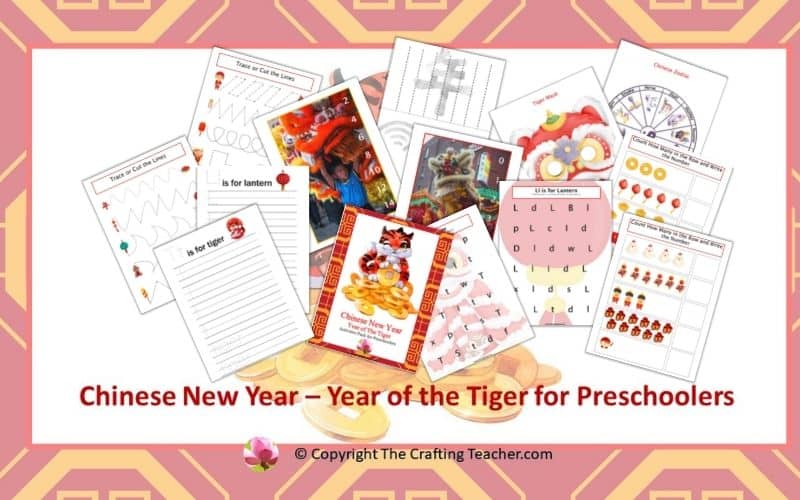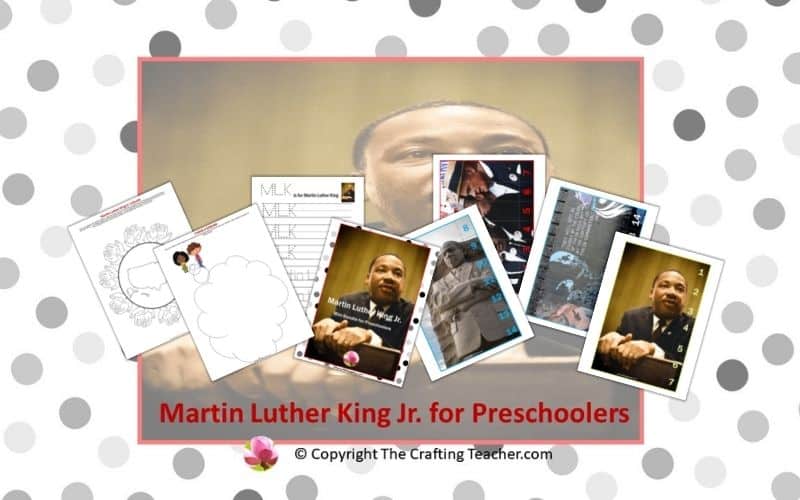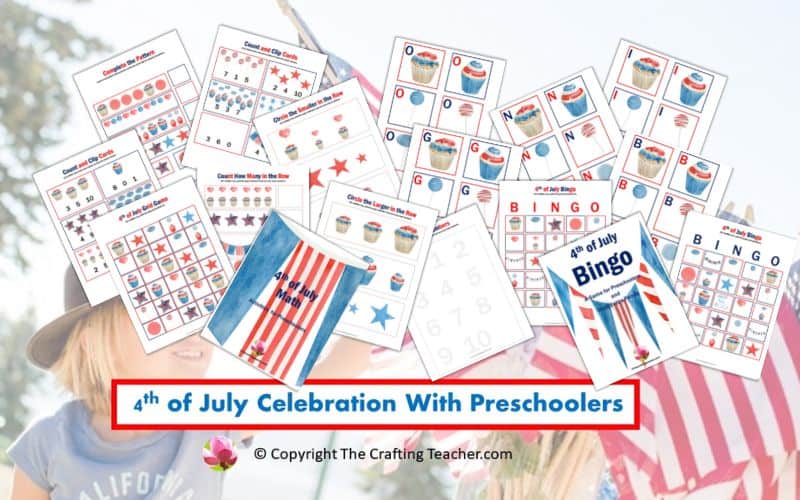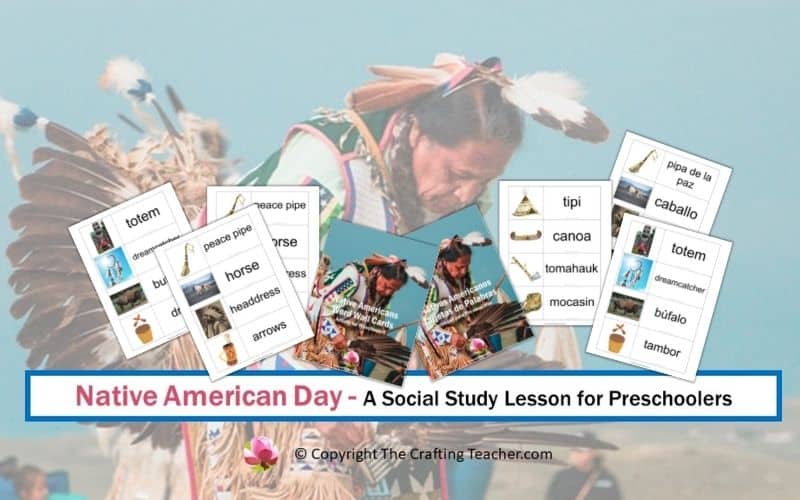Chinese New Year – Year of the Tiger
Affiliate Disclosure: “This post contains affiliate links, which means I receive a small commission, at no extra cost to you, if you make a purchase using those links.”
This year, the Chinese New Year starts on Tuesday, February 1st, 2022, marking the beginning of the Year of the Tiger, and it is a good opportunity to use it as a social studies lesson for your preschoolers, to help them learn about and appreciate the Chinese culture, and connect them with the world.
This celebration is the most important festival celebrated in China, it’s also known as Lunar Year or Spring Festival (because it marks the beginning of Spring), and it’s a very important time where families get together.
Even when it’s mainly recognized as a Chinese New Year, in reality, is the most important event celebrated in other Asian countries as well, such as Indonesia, The Philippines, Vietnam, South Korea, Malaysia, North Korea, Taiwan, Singapore, and Brunei, and in many Chinatowns in cities such as Los Angeles, San Francisco, New York, London, Paris, and other, where you can see the traditional decorations everywhere and enjoy firecrackers, colorful parades, and dragon dances.
Traditionally, the Chinese New Year was a time when people prayed to the gods to ensure that their next year’s harvest would be abundant. Nowadays since has changed, but Chinese people still pray as they remember their ancestors. The celebrations last about two weeks, and are wrapped up with the Lantern Festival, held on the 15th day after the Chinese New Year’s Eve.
I’ve included a FREE Chinese New Year activities pack, which you can find at the end of this post.
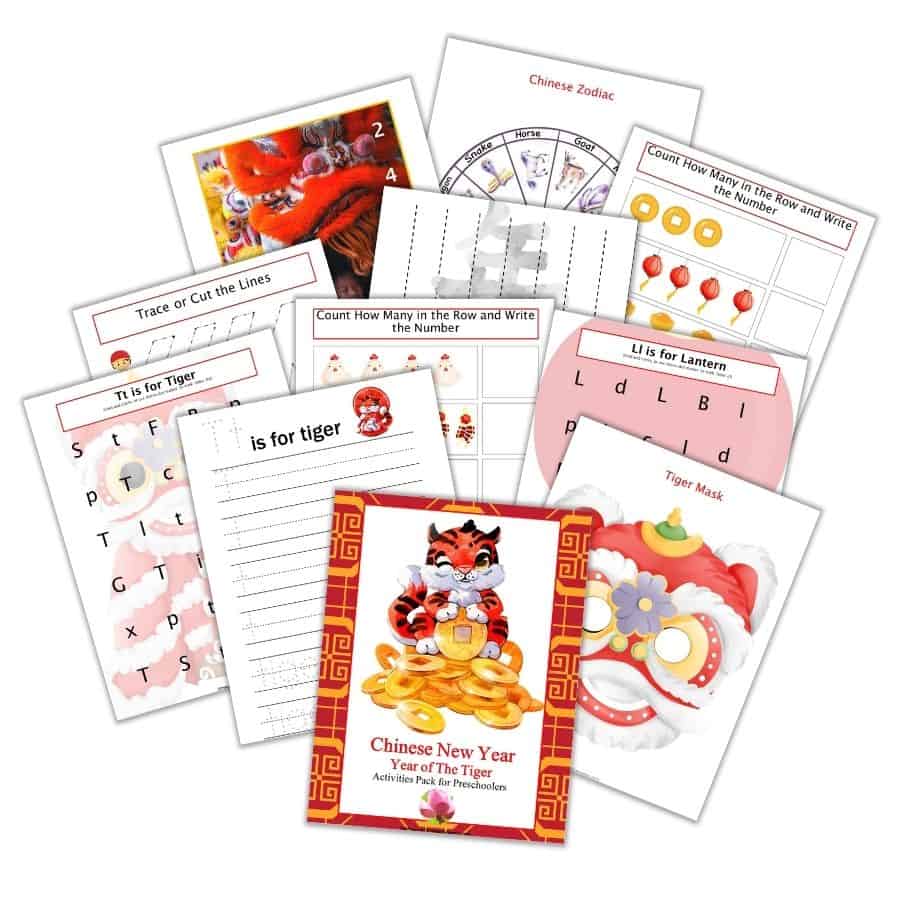
This Chinese New Year – Year of the Tiger 18-pages long pack includes:
- Two beginning letters and word tracing sheets for the words tiger and lantern.
- Two “Find and mark the Letters” activities, including Tt for Tiger and Ll for Lantern.
- Two alphabet letter mazes one with uppercase letters and one with lowercase letters.
- Two “Count How Many and Write the Number” activities.
- Two “Trace or Cut the Lines” activities.
- Two number puzzles with beautiful photographs.
- One lantern template.
- One tiger’s mask.
- One Chinese Zodiac illustration.
- Two sheets for the “Find Your Birth Animal” activity.
- One 2022 calendar with Chinese illustrations.
Year of the Tiger
The Chinese New Year is marked by the Chinese solar calendar, represented by 12 different zodiac animals according to the year. The legend that originated in the Chinese calendar is that “The Lord Buddha summoned all the animals to come to him before he departed from earth. Only twelve came to bid him farewell and as a reward, he named a year after each one in the order they arrived.” The Chinese believe the animal ruling the year in which a person is born has a profound influence on personality, saying: “This is the animal that hides in your heart.”
This year is the Year of the Tiger, which starts on February 1st, 2022, and will end on January 21st, 2023. It is a Water Tiger year. According to Chinese culture, each zodiac sign is associated with one of the five elements: Gold (Metal), Wood, Water, Fire, or Earth. It means that in the case of the Tiger, there are five types. Each type comes once in a 60-year cycle, and each of them has different characteristics. This year is a Water Tiger year. According to Chinese culture, people born and the main characteristics are a strong sense of self-esteem and learning ability.
There is a legend that talks about how the tiger became one of the animals in the Chinese zodiac, and you can read it to your children from here.
In China, the Tiger is known as the king of all beasts, and it is a symbol of braveness, strength, and destroyer of all evils. The Tiger is the third animal in the Chinese zodiac. The 12 zodiac animals are, in order: Rat, Ox, Tiger, Rabbit, Dragon, Snake, Horse, Goat, Monkey, Rooster, Dog, and Pig.
Show your children the Chinese Zodiac, and have a game where they try to find out what is their birth year animal, and how the Chinese culture sees them. This is part of the Chinese New Year’s FREE pack.
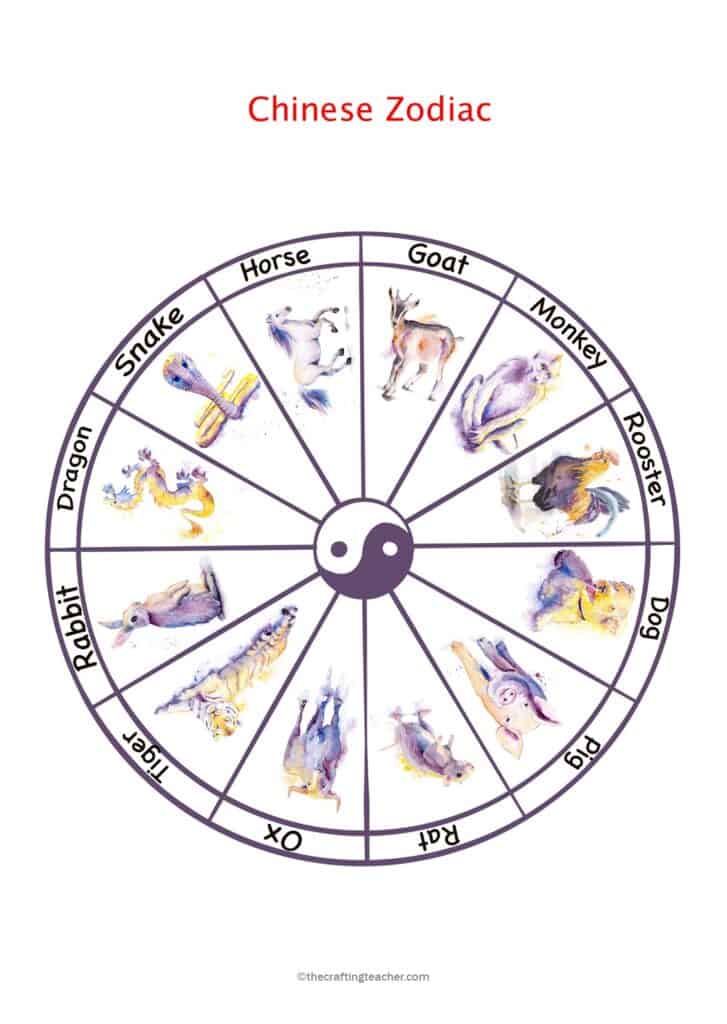
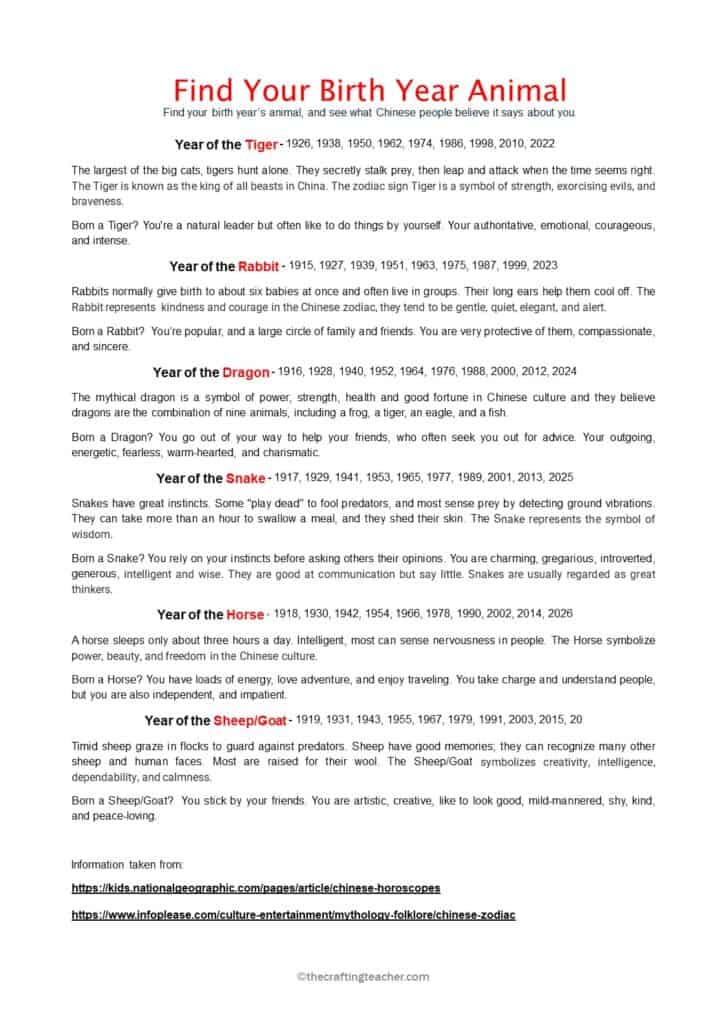
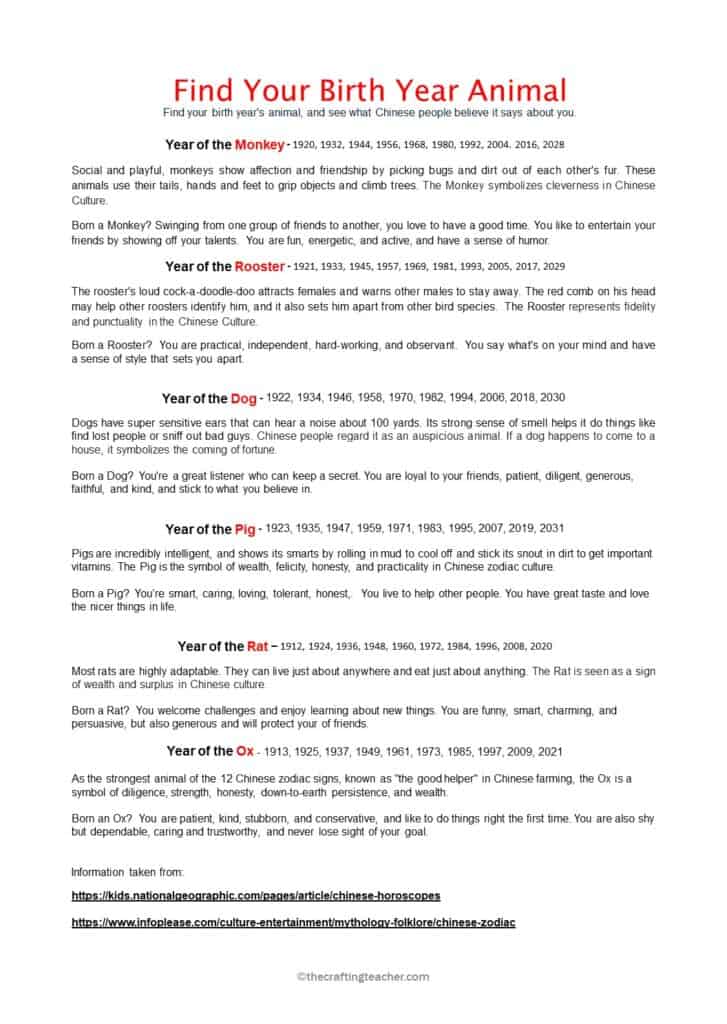
Customs and Traditions
This festival is full of regional customs and traditions, but share a common goal, which is getting rid of all the negativity and bad luck of the former year, and bringing forward luck and prosperity for the new one.
Foods
Chinese people eat certain foods during New Year’s celebrations, and each of them has a symbolic meaning. Everything is important for these meals, not just the pronunciation of the food itself but also the preparation, the way is served, and the eaten it, and the main purpose is to bring luck for the coming year. There are seven main dishes served. These are:
- Rice Cakes – to get a higher position or income. These cakes are made with sticky rice, sugar, chestnuts, Chinese dates, and lotus leaves.
- Good Fortune Fruits – Chinese people believe that eating and displaying round and golden fruits like tangerines and oranges brings good luck and fortune.
- Sweet Rice Balls – to keep the family together. It is also the main food item for the Lantern Festival.
- Dumplings – to get wealth. According to Chinese legend, the more dumplings you eat during the New Year celebrations, the more money you can make in the New Year. They are normally made with minced meat (like pork, shrimp, fish, chicken, and beef), and finely chopped vegetables wrapped in a thin dough. They can be cooked by boiling, steaming, frying, or baking.
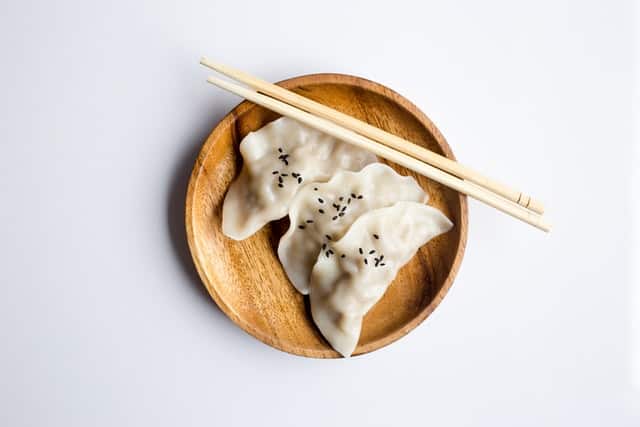
- Spring Rolls – for wealth. These are cylindrical-shaped rolls filled with vegetables, meat, or something sweet wrapped in thin dough, and fried until golden.
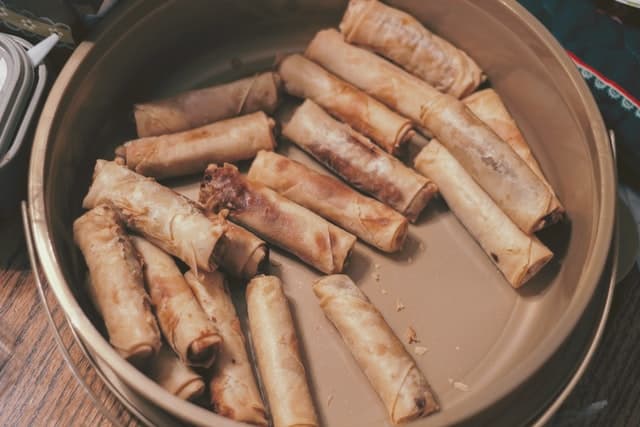
- Longevity Noodles – symbolize happiness and longevity. They are longer than normal noodles and uncut. They are prepared fried and served on a plate, or boiled and served in a bowl with their broth.
- Fish – to increase prosperity. Traditionally, the fish should be the last dish eaten. It can be cooked by boiling, steaming, and braising.
Red Envelopes Exchange
During these festivities older people give away red envelopes to younger ones, to symbolize sending good wishes and luck (as well as money). This costume is also used by bosses or leaders to employees or people under their command, as a special bonus.
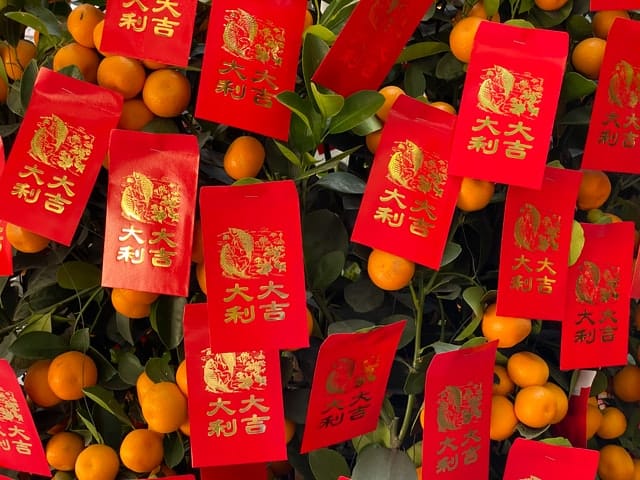
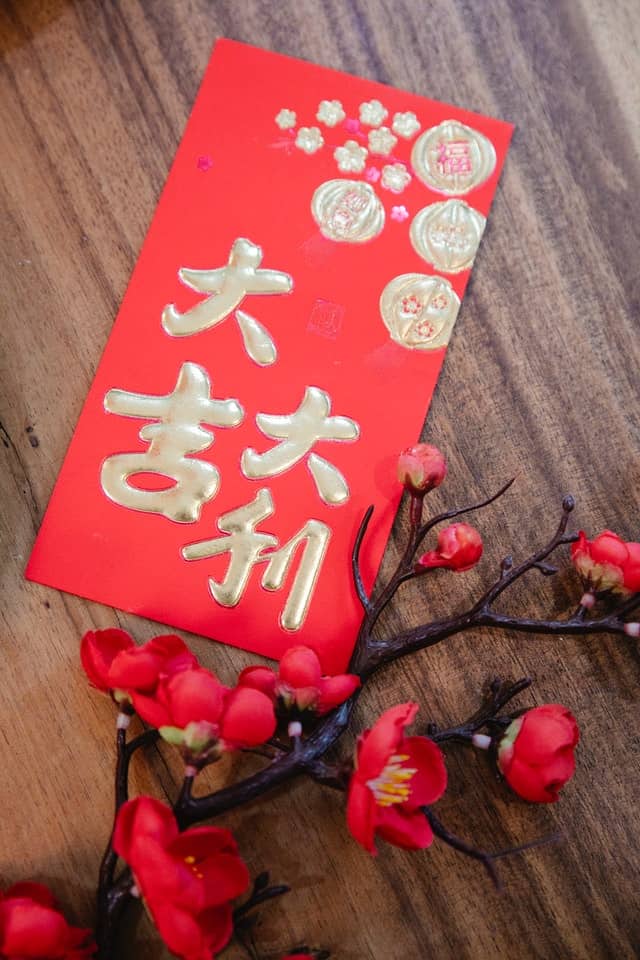
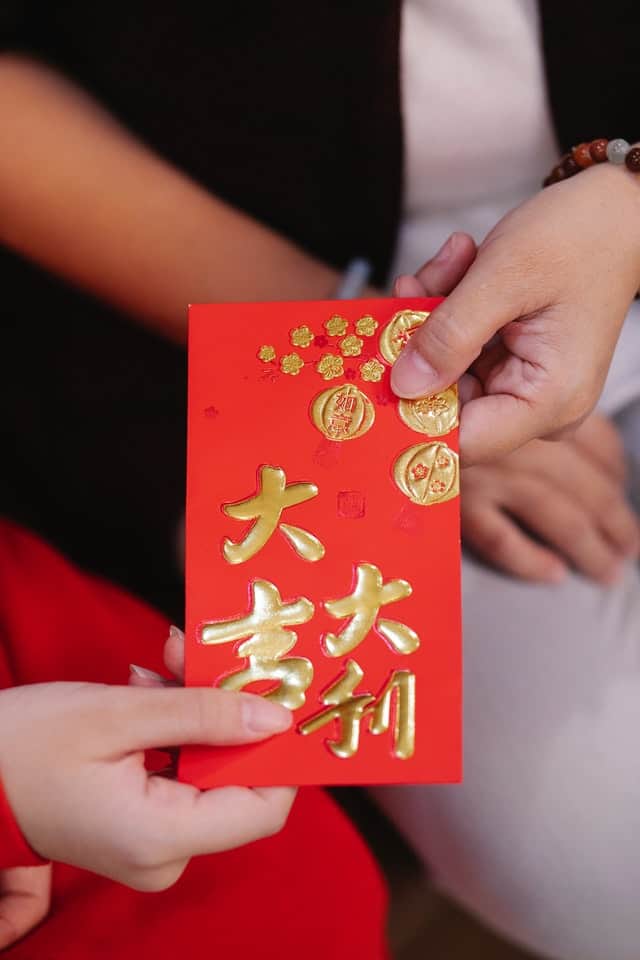
Red Envelope Craft
Provide red construction paper, glue, and gold glitter. Have the children trace designs on their paper, and sprinkle gold glitter on top. Let the envelopes dry. Have the children exchange their envelopes or ask them to give their envelopes to somebody special.
Special Decorations
Since red is the Chinese favorite color, they use it everywhere and in every decoration. This color represents positive things such as happiness, good luck, success, good fortune, and vitality. Most decorations represent the animal of the year. This year they will represent the Tiger. Some of the most common decorations are:
- Lanterns – to get rid of the bad luck. During Chinese New Year lanterns are hung everywhere, in buildings, trees, and houses.
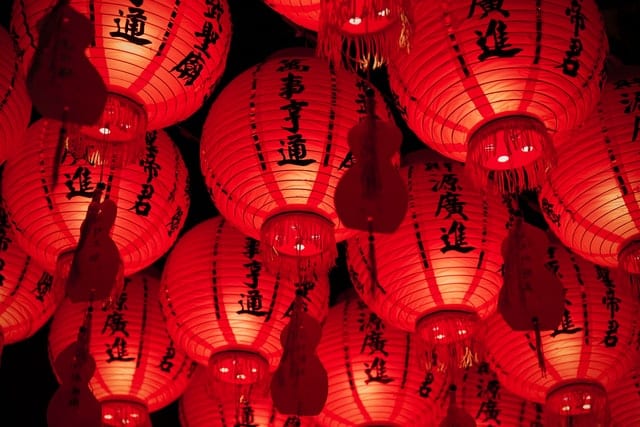
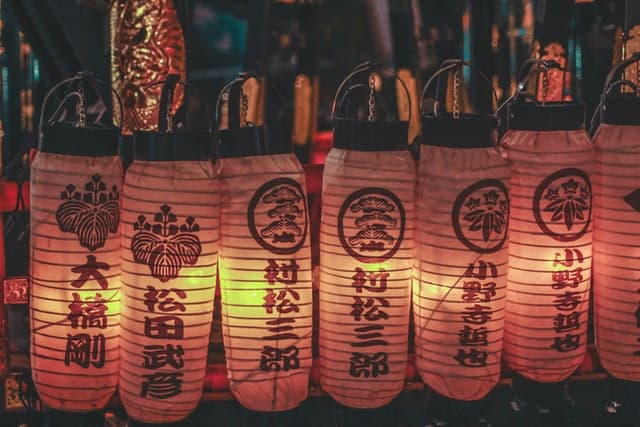
- Door Couplets – representing best wishes for the coming year. These couplets look like long banners and are posted in pairs, especially because for Chinese people even numbers are associated with good luck. They are adorned with beautiful Chinese calligraphy, in black ink on red paper.
- Paper Cuttings – to represent luck and happiness. Beautiful Chinese art consists in cutting designs out of paper, and then gluing them to a contrasting backing or a transparent surface such as doors and windows.
- Blooming Flowers – to wish you a prosperous new year. The ones traditionally used are orchids, peonies, plum blossoms, and peach blossoms.
Wearing New Clothes
During Chinese New Year it is customary to buy new clothes for their children to wear during the reunion dinner on New Year’s Eve because in Chinese culture it is believed that wearing new clothes can bring fortune and health.
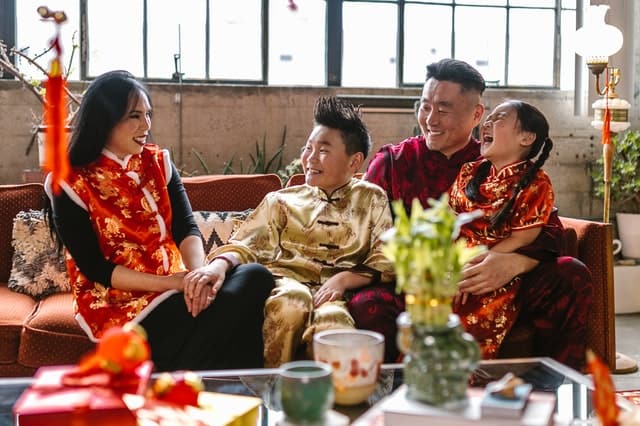
Displaying Fireworks
The fireworks were invented by the Chinese thousands of years ago. Red symbolizes fire, which according to legend can drive away bad luck. The fireworks that shower the festivities are rooted in a similar ancient custom. Long ago, people in China lit bamboo stalks, believing that the crackling flames would frighten evil spirits.
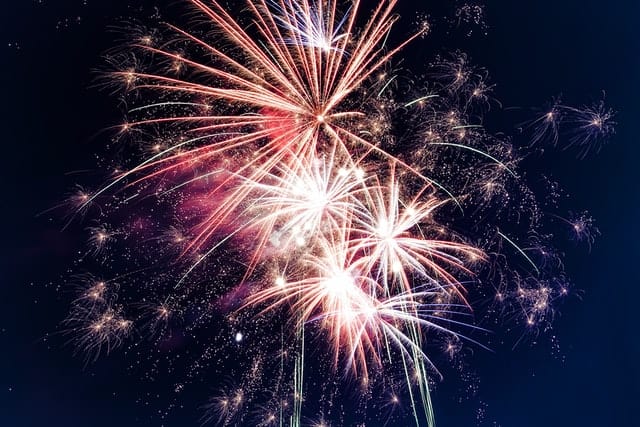

Due to the overpopulation and cities growth, today the use of personal fireworks is forbidden for safety reasons, but the government continues with the tradition of setting up millions of fireworks and firecrackers at midnight during Chinese New Year’s Eve. It is the biggest usage of fireworks in the entire world.
The following video shows a beautiful display of those fireworks:
Fireworks Craft
Have the children create their own Chinese New Year firework pictures, and use them as a decoration for your classroom or home, during the Chinese New Year. You will need:
black construction paper, glitter, white glue, old newspapers, and straws.
Place old newspapers on the table. Dilute the glue a little bit with a very small amount of water. Have the children put a small blob of glue on the paper, and then blow some air through a straw to spread it into interesting shapes. Sprinkle glitter onto the glue. Slide the excess glitter off your picture and back into the glitter container, and let it dry.
Family Dinner
One of the most important traditions during Chinese New Year’s Eve is a big family dinner, where multiple generations sit around tables and enjoy a special feast that includes many lucky foods. For Chinese people, this reunion is so important, that it is expected that everybody comes for this celebration, and therefore, a huge migration of Chinese people occurs. It is believed that this celebration will ensure good fortune for the coming year.
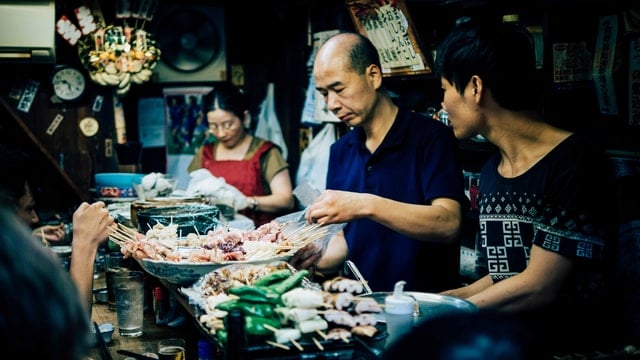
Lion and Dragon Dances
One of the traditions Chinese people have during their New Year’s celebration is watching Lion and Dragon Dances. Those dances can even be seen in Chinatowns in Western countries. The purpose of these dances is to bring prosperity and good luck for the new year.
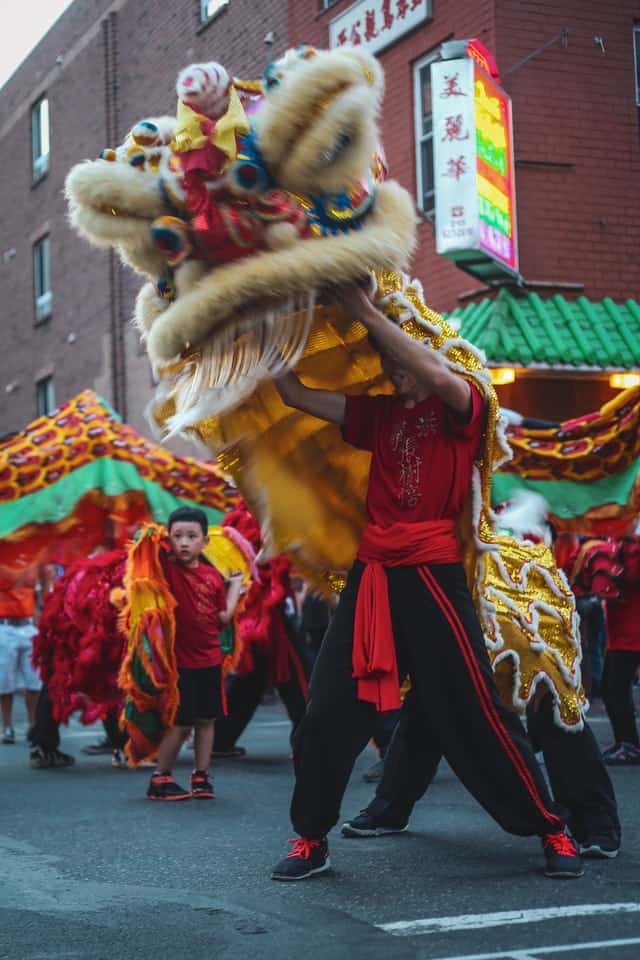
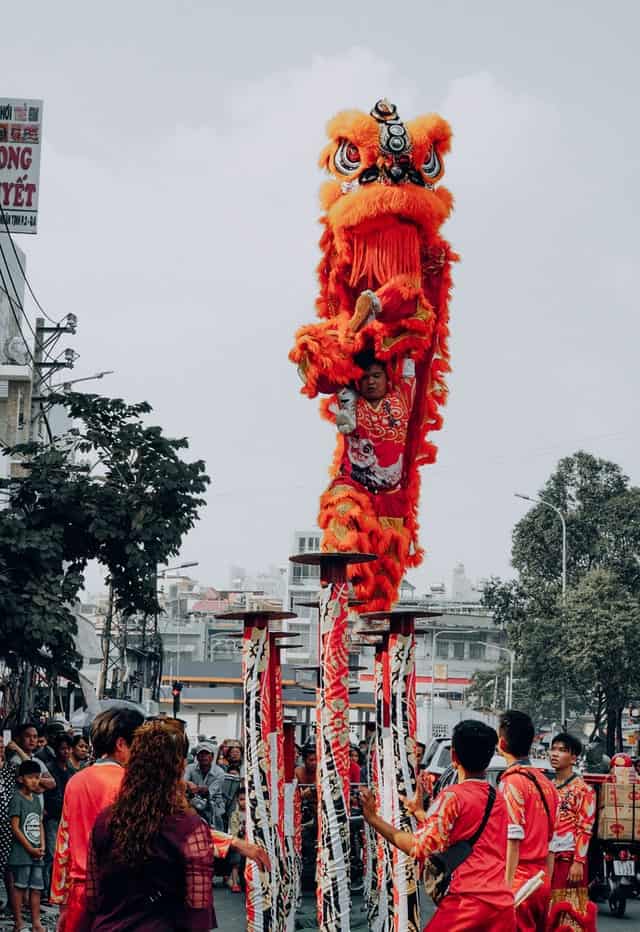
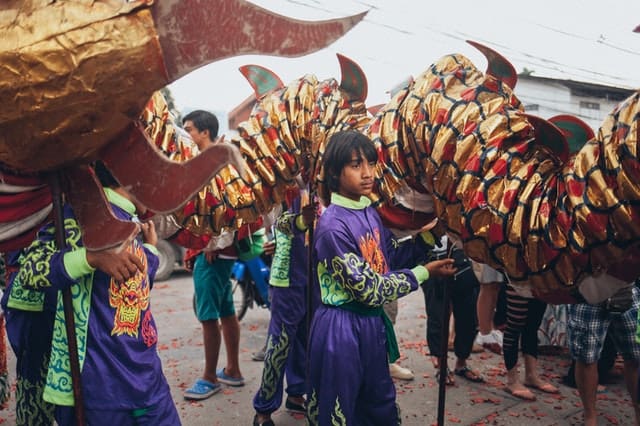
I found two videos that you can show your children. The first one is a sample of the Lion Dance, and the second one is the Dragon Dance.
Tiger Mask Craft
Have the children cut out the mask included in the FREE pack. Staple a piece of a rubber band or construction paper on the back. Have them imitate the Lion Dance or dance to Chinese music with their masks on.
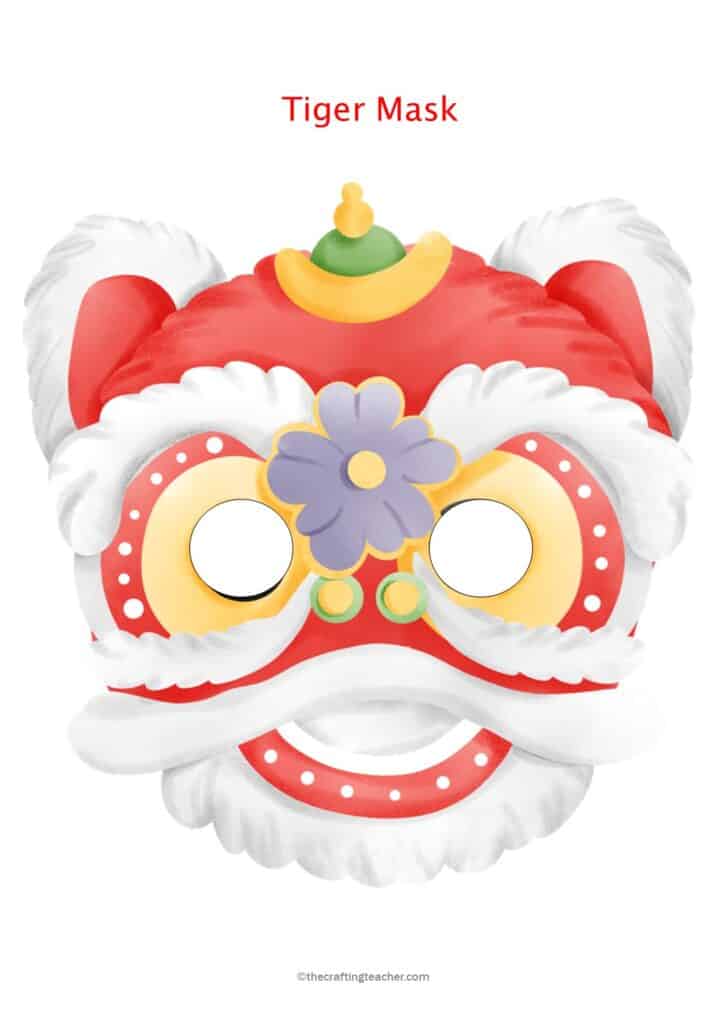
Dragon Craft
The Dragon is typically made of silk, paper, and bamboo, and could be up to 100 feet long. Young men held the dragon making it dance as they guided the beautiful creation through the streets.
To give your children a hands-on experience, cut an extremely long sheet of roll paper. Provide crayons, markers, Chinese stickers, pieces of tissue paper, glue, glitter, and other materials you have handy, and have the children decorate the paper. When dry, have the children hold each end and the sides of their dragon and recreate the dragon dance in the playground.
Taboos or Superstitions
In the Chinese culture is believed that the beginning of the year, including what something looks like (color and shape), and what its name sounds like, will affect if the following year is going to be successful or bad; therefore, this season is full of taboos and superstitions.
Because of that, there are several activities Chinese people don’t do during the Chinese New Year celebration since it’s believed to bring bad luck. Some of those are:
- Sweeping up and taking out the garbage – because they will remove the good luck from the house.
- Not eating porridge for breakfast – because they will become poor in the upcoming year.
- Washing hair or clothes on the first day of the lunar year – because it will wash the fortune away.
- Give away pears – because it represents leaving or parting.
- Give away mirrors as gifts – because they are considered a bad omen and an attraction for malicious ghosts.
The Lantern Festival
Traditionally, on the evening of the 15th day of the first lunar month (February 15, 2022), on the night of the full moon, families get together for a big dinner and go out and see fireworks and light lanterns. Some of these lanterns are true works of art, painted with birds, zodiac signs, animals, flowers, and scenes from legend and history.
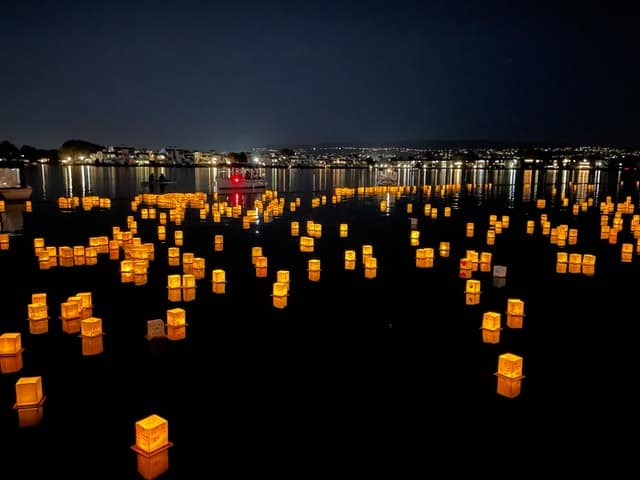
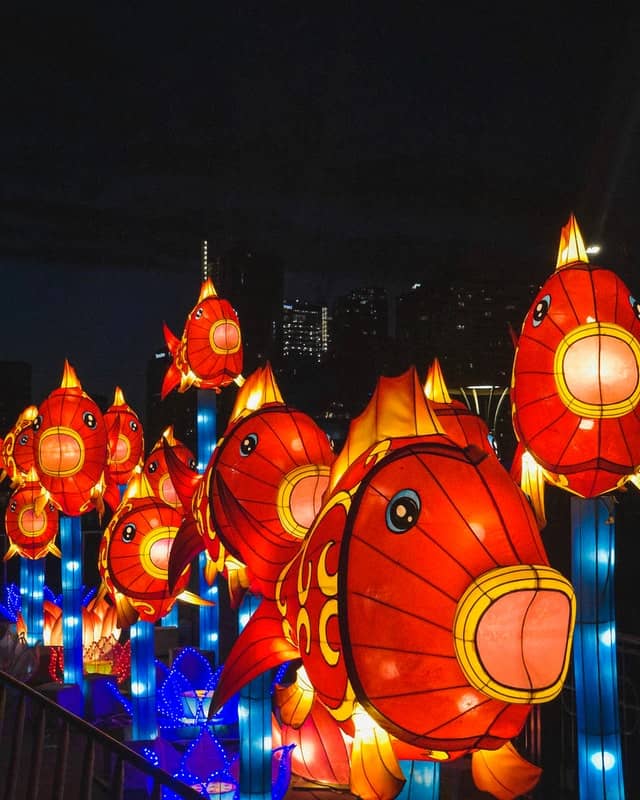
Lanterns are put up for decoration, hung glowing in temples, and carried to an evening parade during the full moon. Then, they let loose hundreds of lanterns flying, and float in rivers. It is a beautiful celebration. The video below will show your children what the Lantern Festival looks like.
Lantern Craft
Have the children make their lanterns, with just a handful of materials. They are going to need: red construction paper, tape, stapler or glue, ruler, scissors, and gold glitter.
- Fold a rectangular piece of paper in half, making a long, thin rectangle.
- Have the children make designs on top of it with glue, and sprinkle gold glitter on top of the glue. Let it dry.
- Make several cuts along the fold line. Don’t cut to the edge of the paper. Unfold the paper.
- Glue or staple the short edges of the paper together.
- Cut a strip of paper 6 inches long and 1/2 inch wide. Glue or staple this strip of paper across one end of the lantern – this will be the handle of the lantern.
I’ve included a lantern template in the Chinese New Year’s FREE pack, for your convenience.
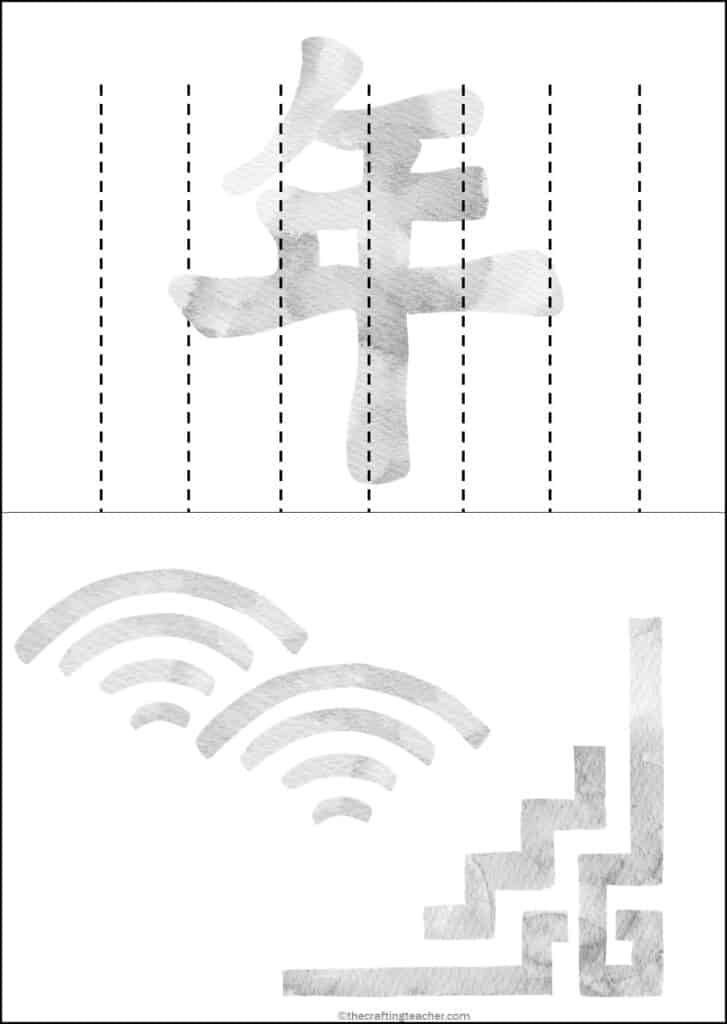
Books About the Chinese Culture
It is important to help children understand that they are in other cultures, such as the Chinese Culture, where things are done differently, and traditions, beliefs, and costumes might not be the same as the ones they know. Using books is a great way to do this.
As usual, I will recommend filling out your library, centers, and book baskets to support this theme and help children embrace Chinese Culture. Below you can find a big selection of books related to the Chinese New Year. These books can be found at your local library, used bookstores, and at Amazon. I also added my affiliate links to every book in the list below, to make it easier for you to get the ones you want.
- Chinese New Year for Kids by Cindy Roberts.
- Dim Sum for Everyone by Grace Lin.
- Celebrating Chinese New Year: History, Traditions, and Activities by Eugenia Chu.
- Dragon Dance – A Chinese New Year by Joan Holub.
- Fortune Cookie Fortunes by Grace Lin.
- Holidays Around the World: Celebrate Chinese New Year: With Fireworks, Dragons, and Lanterns by Caroline Otto.
- Grandfather Tang’s Story by Ann Tompert.
- Happy, Happy Chinese New Year by Demi Hitz.
- My First Chinese New Year by Karen Katz.
- Lanterns and Firecrackers – A Chinese New Year Story by Jonny Zucker.
- Lion Dancer by Kate Waters.
- Bringing In the New Year by Grace Lin.
- Moonbeams, Dumplings, and Dragon Boats by Nina Simonds.
- One Is a Drummer: A Book of Numbers by Roseanne Thong.
- Round Is a Mooncake: A Book of Shapes by Roseanne Thong.
- Ruby’s Wish by Shirin Yim Bridges.
- Sam and the Lucky Money by Karen Chinn.
- The Dancing Dragon by Marcia K. Vaughan.
- Celebrating Chinese New Year: Nick’s New Year by Rosa Drew.
- The Five Chinese Brothers by Claire Huchet Bishop.
- The Runaway Rice Cake by Ying Chang Compestine.
- This Next New Year by Janet S. Wong.
- Tikki Tikki Tembo by Arlene Mosel.
Other Activities You Can Do
I’m sure you can come up with multiple activities appropriate for this celebration, but I just want to give you some ideas that I have used in the past, successfully. These are:
- Invite a Chinese person to come to your classroom and talk about this festival.
- Have them use chopsticks to transfer small objects like marshmallows, starburst candies, or cotton balls from one container to another (excellent fine motor activity).
- Serve Chinese finger food for lunch or snacks, like egg rolls and won tons.
- Have a parade using tiger masks.
Pin It For Later
If you are in a rush and don’t have time to read the post and download the printable but want to save it for later, pin this to one of your Pinterest boards for later.
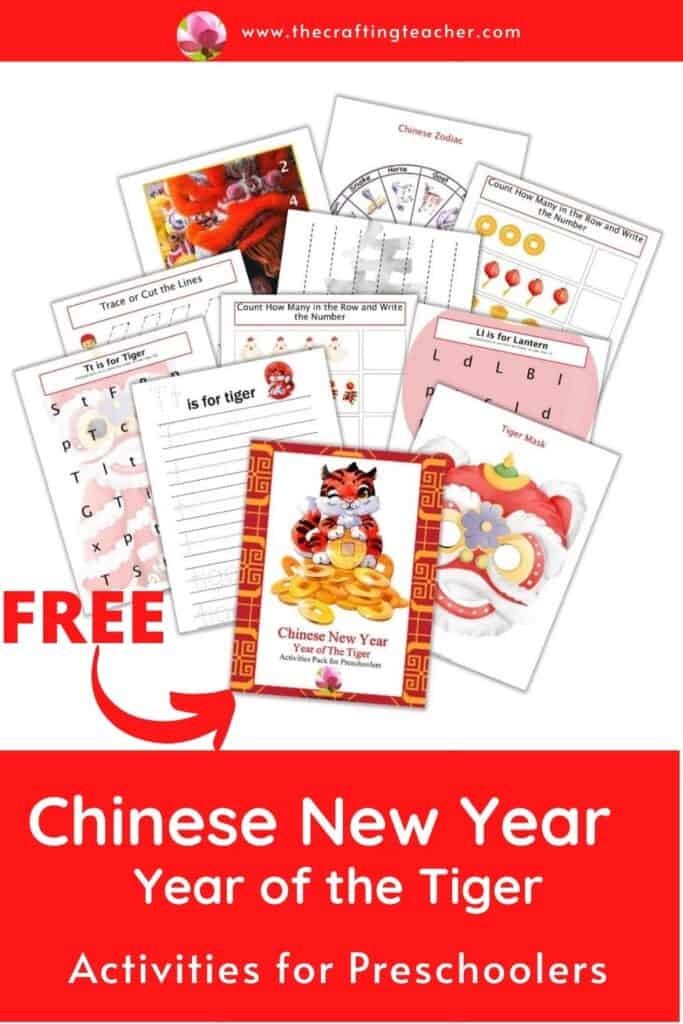
I hope you enjoy these ideas and help you have fun during the Chinese New Year celebration with your preschoolers. To get the FREE pack, you just have to click on the link below and put your information, for an immediate download.
Be happy, safe, and creative. I wish you well.
Love,

P.D. Please let me know if any of these ideas worked for you, or if you think I need to add or replace something. My goal is to help you in any way I can and I don’t like anything better than to post something that you might find useful. Also, if you came up with different ideas and want to share them, I would love to post them as well.

